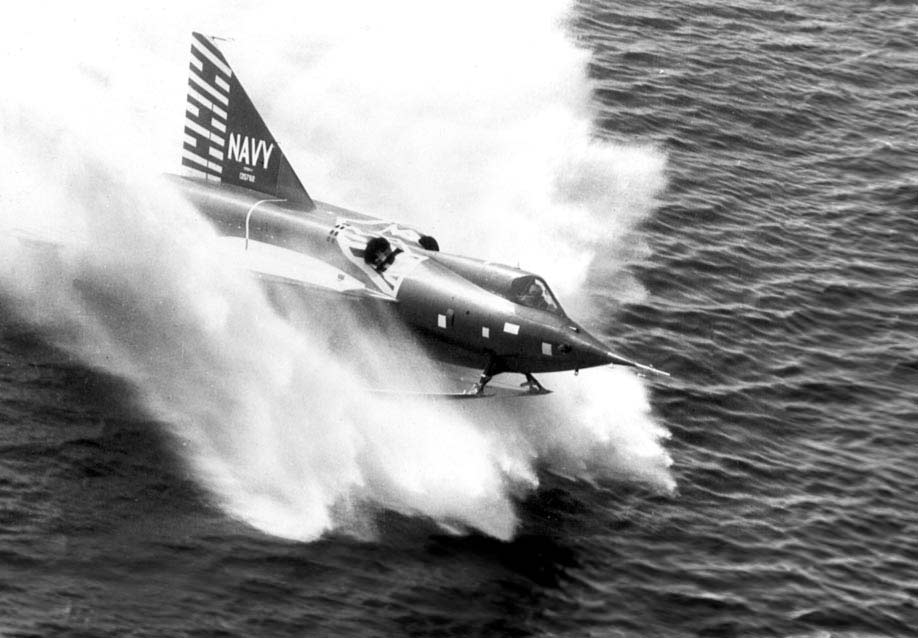The CONVAIR F2Y Sea Dart, a unique seaplane fighter, was the only supersonic water-based aircraft with delta-wing design and ski-based takeoff system.
In brief
The CONVAIR F2Y Sea Dart was a groundbreaking seaplane fighter developed by CONVAIR in the 1950s. As the only seaplane to break the sound barrier, the Sea Dart showcased innovative design features, including a delta-wing configuration and a ski-based takeoff and landing system. It was developed in response to the need for a high-performance fighter capable of operating from water. Despite its pioneering design and impressive performance capabilities, the Sea Dart program faced challenges and was ultimately short-lived, marking a unique chapter in aviation history.
The CONVAIR F2Y Sea Dart holds a distinctive place in aviation history. This article explores its development, design, performance, variants, and military use, providing a comprehensive understanding of this unique aircraft.
History of the Development of the CONVAIR F2Y Sea Dart
During the Cold War era, the US Navy sought innovative solutions to base fighters without the reliance on aircraft carriers. The Sea Dart was conceptualized in this context, aiming to provide a high-performance jet fighter that could operate from water.
The F2Y Sea Dart program, initiated by CONVAIR in the early 1950s, aimed to overcome the limitations of traditional sea-based aircraft. It was designed to meet the Navy’s requirement for a supersonic fighter that could be deployed away from vulnerable carriers.
The Sea Dart first took to the skies on April 9, 1953. Its development was marked by both innovation and challenges, as engineers sought to reconcile the demands of supersonic performance with the unique requirements of water-based operations.
The Sea Dart remains a symbol of Cold War-era innovation and the exploration of alternative fighter deployment methods. Although it did not enter mass production, its development provided valuable insights into seaplane design and supersonic flight.

Design of the CONVAIR F2Y Sea Dart
The Sea Dart featured a radical design, with its delta wing and water ski arrangement for takeoff and landing on water. Measuring 52 feet 7 inches (16.03 meters) in length with a wingspan of 33 feet 8 inches (10.26 meters), it was a sizable aircraft.
One of the main advantages was its ability to operate independently of aircraft carriers. However, its water-based operations posed significant challenges, including instability during takeoff and landing.
The Sea Dart contributed to the understanding of supersonic seaplane design, a relatively unexplored area in aviation. Its unique combination of features set it apart from other fighter jets of its era.
Performance of the CONVAIR F2Y Sea Dart
Powered by two Westinghouse J46-WE-2 turbojet engines, the Sea Dart had an impressive performance profile. It reached speeds of Mach 1.6 (1,200 mph or 1,931 km/h) and had a service ceiling of 54,800 feet (16,700 meters).
When compared to contemporaneous aircraft like the F-104 Starfighter, the Sea Dart held its own in terms of speed and altitude capabilities. However, its unconventional takeoff and landing mechanism limited its operational flexibility.
Military Use and Combat of the CONVAIR F2Y Sea Dart
The Sea Dart was primarily envisioned as a high-speed interceptor for the US Navy. While it did not see combat or widespread military use, its development paralleled the evolving strategic needs of the Cold War era.
The Sea Dart was not sold to other countries and remained a largely experimental program. Its operational use was limited, and the program was eventually phased out as the Navy pursued other avenues for fighter deployment.
The CONVAIR F2Y Sea Dart stands as a remarkable example of innovation and experimentation in military aviation. Its development reflected the ambitious spirit of the Cold War era, pushing the boundaries of what was possible in aircraft design and performance. While the Sea Dart did not revolutionize seaplane fighters as initially hoped, it provided valuable lessons and remains a fascinating footnote in the history of aviation technology.
Back to the Seaplanes section.